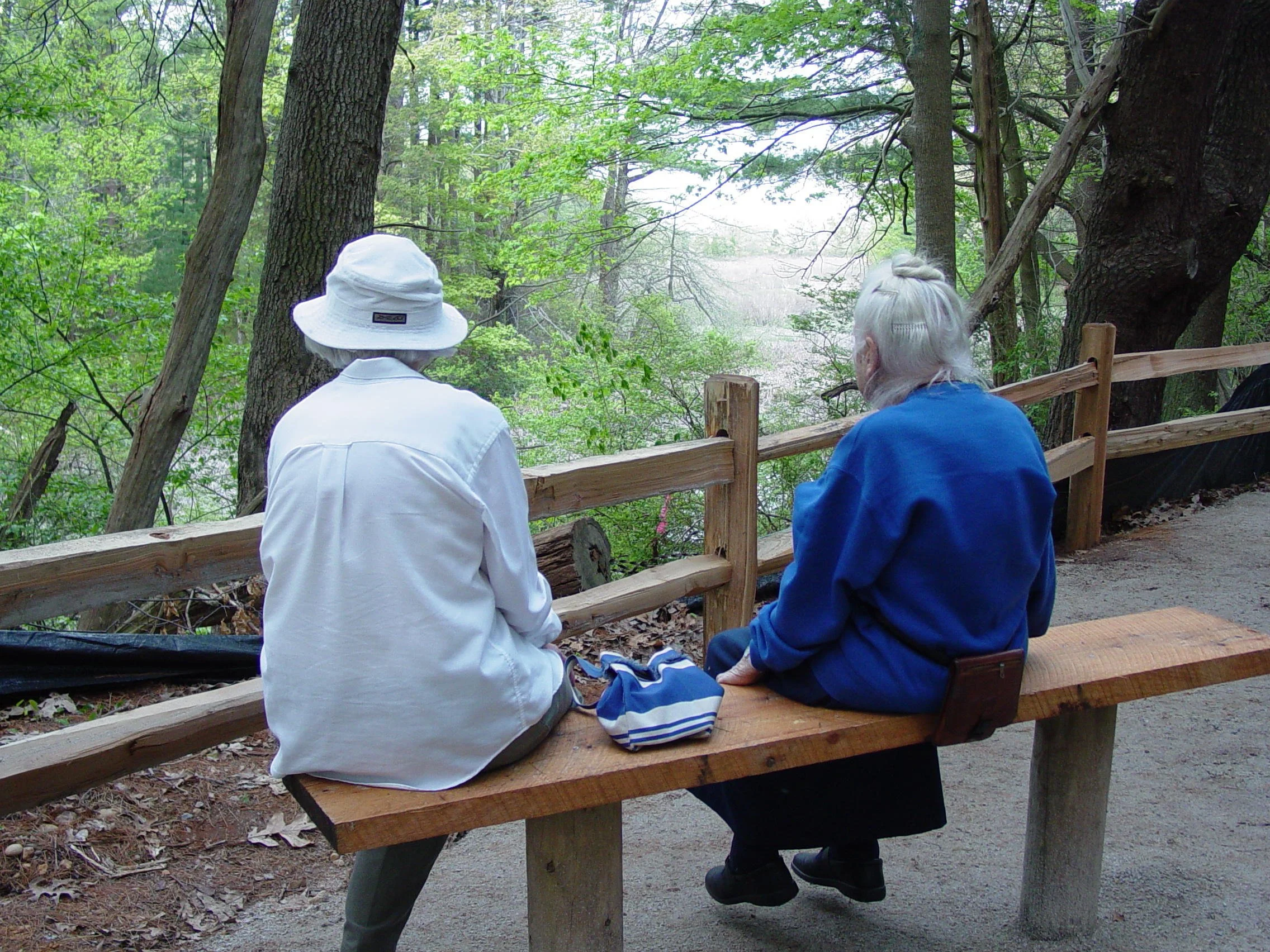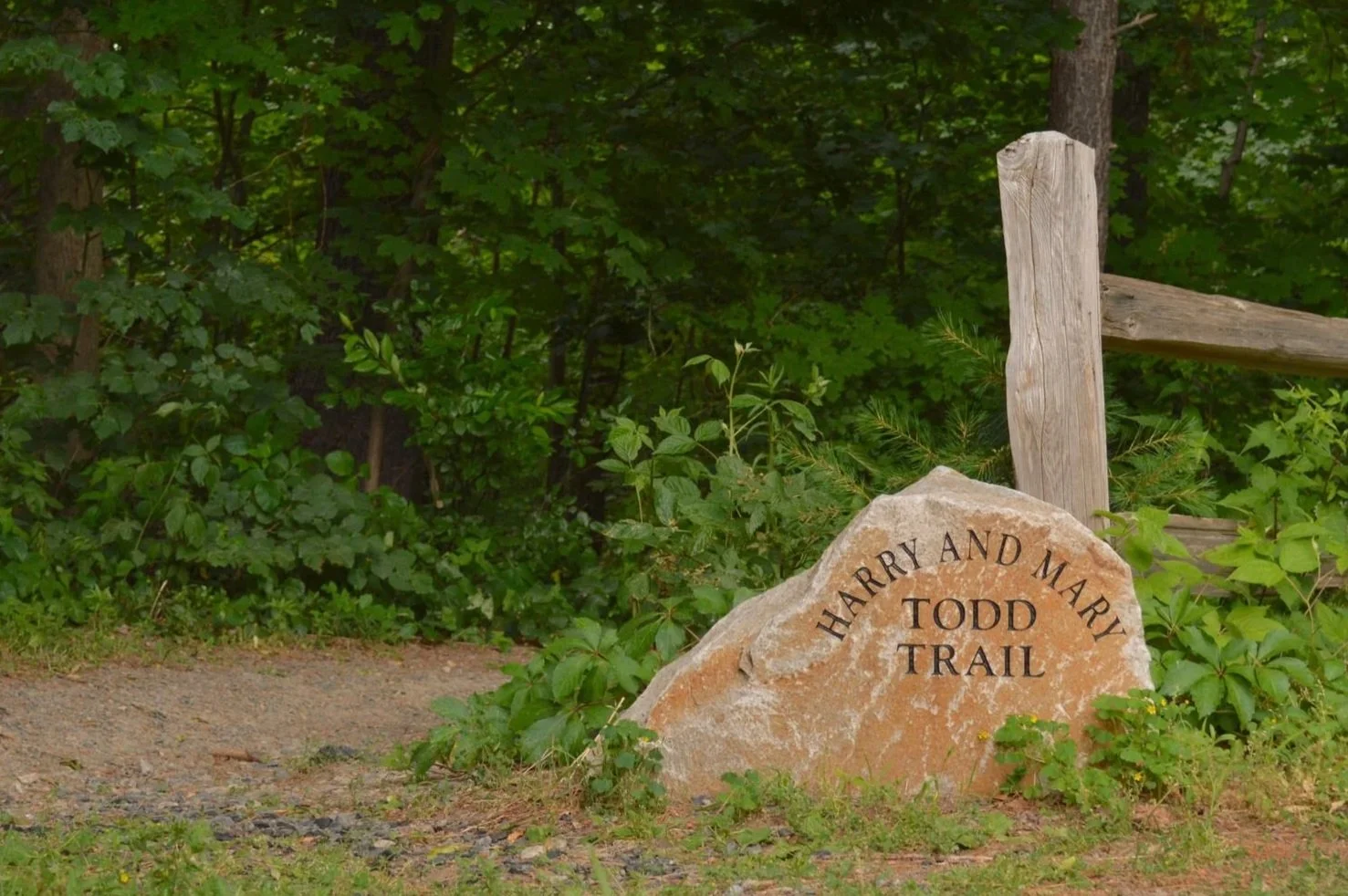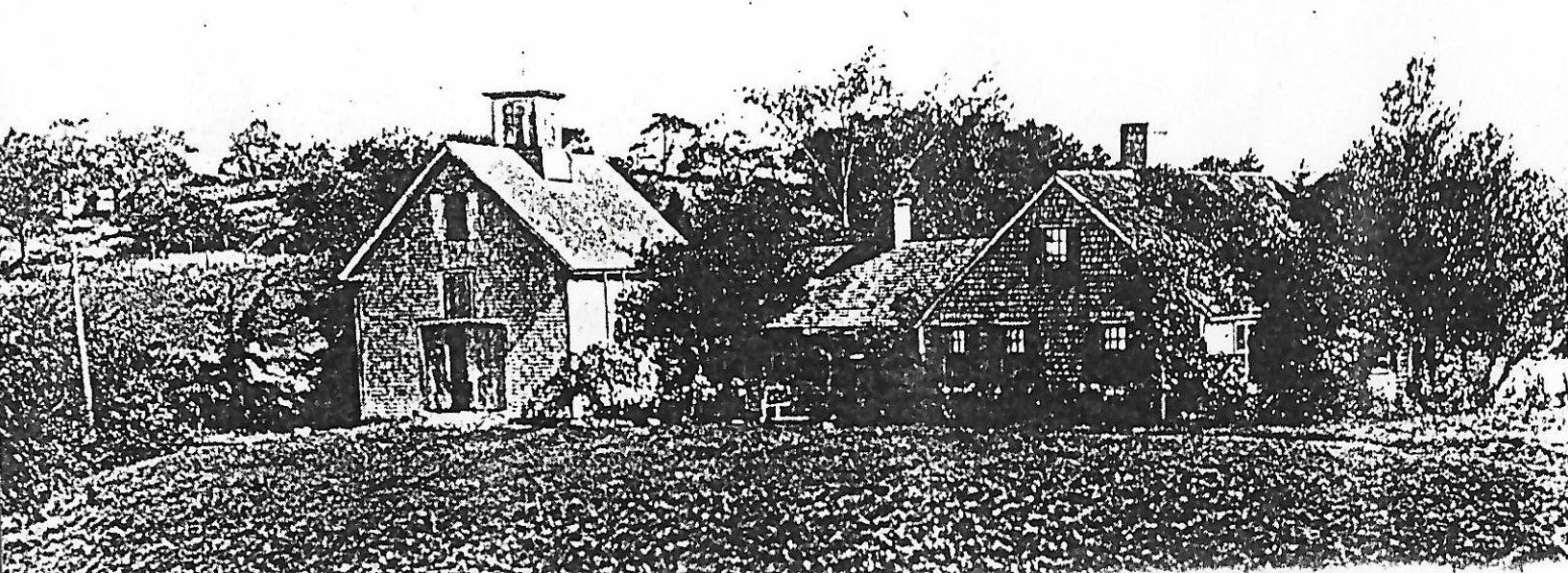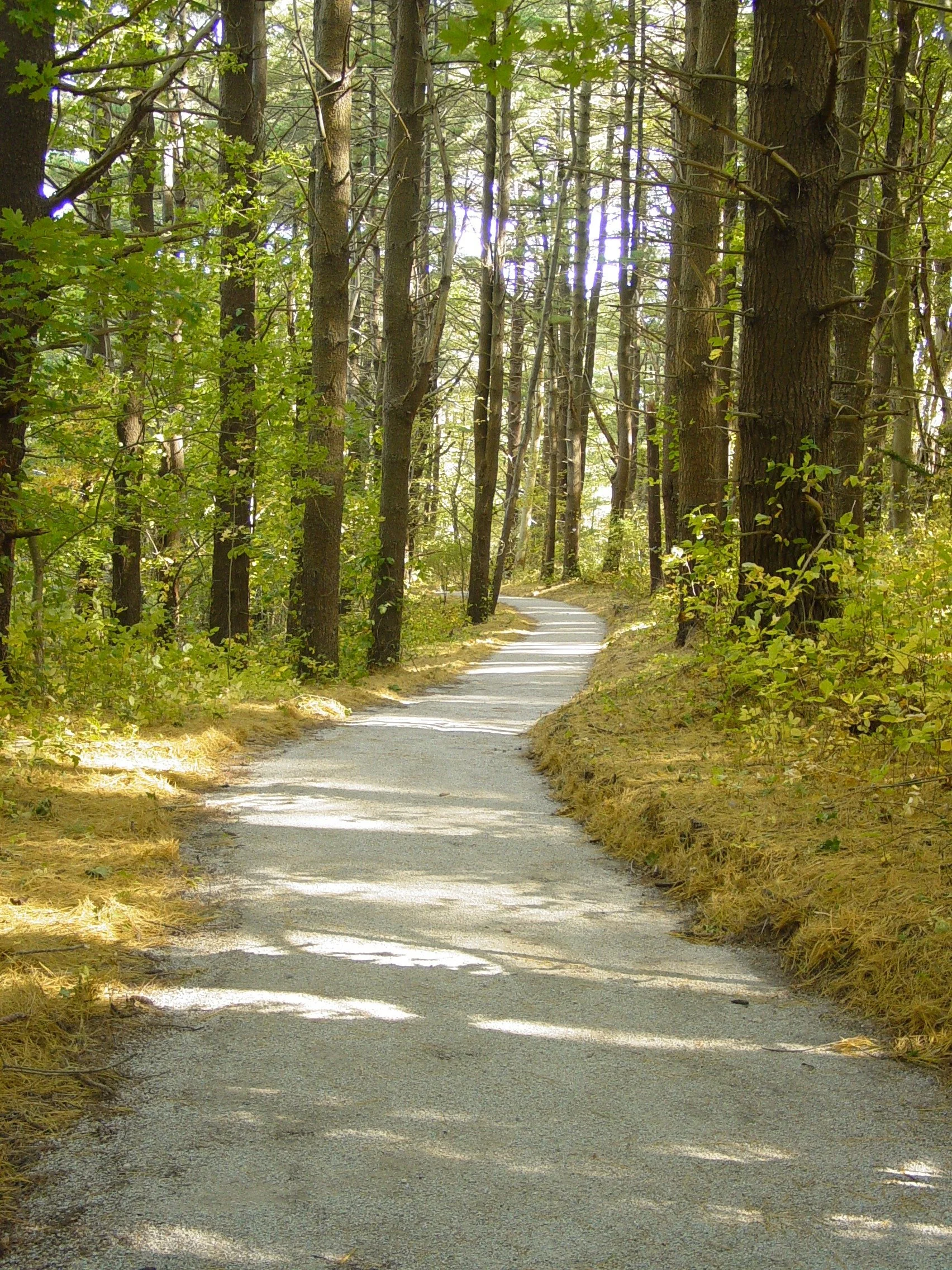Human History of Wildlands: Cow Tent Hill Preserve
River overlook at Cow Tent Hill Preserve. Right: Helen Philbrick, who in 1994 donated Wildlands’ former headquarter property in Duxbury.
By Skip Stuck, Key Volunteer
Throughout this “Human History of Wildlands” series, I have discovered time after time that in Southeastern Massachusetts, a land does not have to be large to be full of history. Cow Tent Hill Preserve in Duxbury is my latest example. Within 32 acres, the preserve encompasses a tidal creek, Duck Hill River, salt- and freshwater marsh, and wooded upland in Duxbury's Millbrook neighborhood.
Early History
For over 10,000 years, Native peoples inhabited this area, drawn by opportunities for hunting, fishing, and shellfishing and access to nearby Duxbury Bay and trading routes like the North River. The Wampanoag Tribe, who lived in the area, called their home Mattakeesett, meaning "place of many fish." They, like other Native peoples living on the New England coast, thrived for many generations, as evidenced by the area’s 33 archeological sites recognized by the Massachusetts Historical Society. However, in the early 1600s, Natives came into contact with increasing numbers of European fishermen and trappers—and in turn with illnesses such as small pox, for which they had no immunity. Between 1600 and 1618, it is estimated that 80 to 90 percent of the local Native population died.
Consequently, when the Pilgrims arrived in 1620, they found relatively few Natives, but large areas of cleared fields ready for agriculture. It is said that Duxbury had as few as four Native families by 1620.
The Harry and Mary Todd Trail at Cow Tent Hill Preserve in Duxbury. Harry and Mary Todd also supported the protection of Willow Brook Farm in Pembroke, where another trail bears their name.
European Colonization
After a difficult start, many colonists followed the Mayflower to Plymouth Colony. Soon, the colony outgrew its original lands. In 1627, the contract with London investors that had funded the initial colonization expired, and leaders of the colony, such as William Brewster, Myles Standish, and John Alden, began allotting nearby lands to colonists. Brewster, Standish, and Alden all received lands in Duxbury. In 1639, Duxborrow (the town's original name) became the colony’s first incorporated town, after Plymouth. One of its early orders of business was to approve the construction of a grist mill on Stoney Brook. As the town grew, a fulling mill and textile mill were added. Stoney Brook became known as Millbrook, where a thriving village took root.
An aside here... Another early resident was Robert Mendame, who owned the land that became the site of the grist mill. His wife, Mary, is immortalized—unfortunately and perhaps unfairly—by an item in the Colony Court Records, which became Nathaniel Hawthorne's partial inspiration for The Scarlet Letter. It was recorded that Mary had a "dallyance" several "tymes with Tinsin, an Indian," and was to be "whipt at a carts tayle through the townes streets."
Others moved in after the initial Pilgrim settlers. One of note was Edouard BonPasse, an ancestor of the Bumpus family who bequeathed the Cow Tent Hill property to Wildlands Trust. Captain Benjamin Church also lived there in the years leading up the King Philip's War, where he became a renowned military leader.
Crab Island House, built 1646. When Constant Southworth became the second owner of the Stoney Brook grist mill in the 1640s, he moved to this house, which was included in the purchase. Three generations of Southworths operated the grist mill. It was rebuilt it in 1746 and went out of business in the late 1800s with the arrival of the railroad in Duxbury. Constant Southworth was the son of Alice Carpenter Southworth, who married Plymouth Colony Governor William Bradford. Photo from Wentworth 1973 (see “Learn More”).
Post-Colonial Period
In the 18th and 19th centuries, industry flourished in Millbrook. Notable businesses included the Duxbury Woolen and Cotton Manufacturing Co. and the Ford Store, reputed to be the first department store in America. A rail line was also opened to transport these products to market. However, around 1900, the mills and businesses of Millbrook closed, unable to compete with the burgeoning textile manufacturing industry in Massachusetts' larger cities. But Duxbury's popularity as a vacation destination and residential community grew.
Cow Tent Hill Preserve.
What had once been called Stoney Brook and then Millbrook was then renamed to Duck Hill River. It returned more or less to the woods, fields, and marshes of 300 years earlier. The property became known as Cow Tent Hill because once it returned to pastureland, farmers would erect a canvas tent to provide shade for the grazing cattle during the heat of summer. As Duxbury became an upscale residential community, most farming also fell by the wayside. Yet the town strove to maintain its rural character, protecting over 3,000 acres of woods and marshland. In 1985, Wildlands Trust opened Cushman Preserve, donated by the granddaughter of Captain David Cushman, Jr., who had purchased the land from relatives of his wife, a direct descendant of John Alden. In 1999, Beatrice Bumpus bequeathed Cow Tent Hill Preserve to Wildlands.
A series of photographs of Cow Tent Hill from 500 years ago to the present would tell a story of stark landscape change. The area would have looked very different before and after 1620, when the Pilgrims first laid eyes on it. Fast-forward 150 years, and booming industry would have depicted a place transformed by people and time. Today, Cow Tent Hill has come close to full-circle, implying a pristine, uninterrupted past to the untrained eye. Yet human beings have always interacted with these wildlands.
We have not located these pictures, but that does not mean they do not exist. If you have photographic or any other evidence of Cow Tent Hill Preserve’s varied past, please reach out at communications@wildlandstrust.org.
We encourage you to visit the preserve for yourself. A property description and directions are available at our website: wildlandstrust.org/cow-tent-hill-preserve.
Learn More
If you would like to learn more about the human history of Millbrook's Cow Tent Hill Preserve, below are some of the resources that contributed to this piece:
The Settlement and Growth of Duxbury, 1628 to 1870, by Dorothy Wentworth, 1970.
A History of The Town of Duxbury, by Justin Winsor, 1849.
Wildlands Trust Cow Tent Hill Management Plan, 2011.
North and South Rivers Watershed Alliance: nsrwa.org
The Duxbury Rural and Historical Society: duxburyhistory.org




